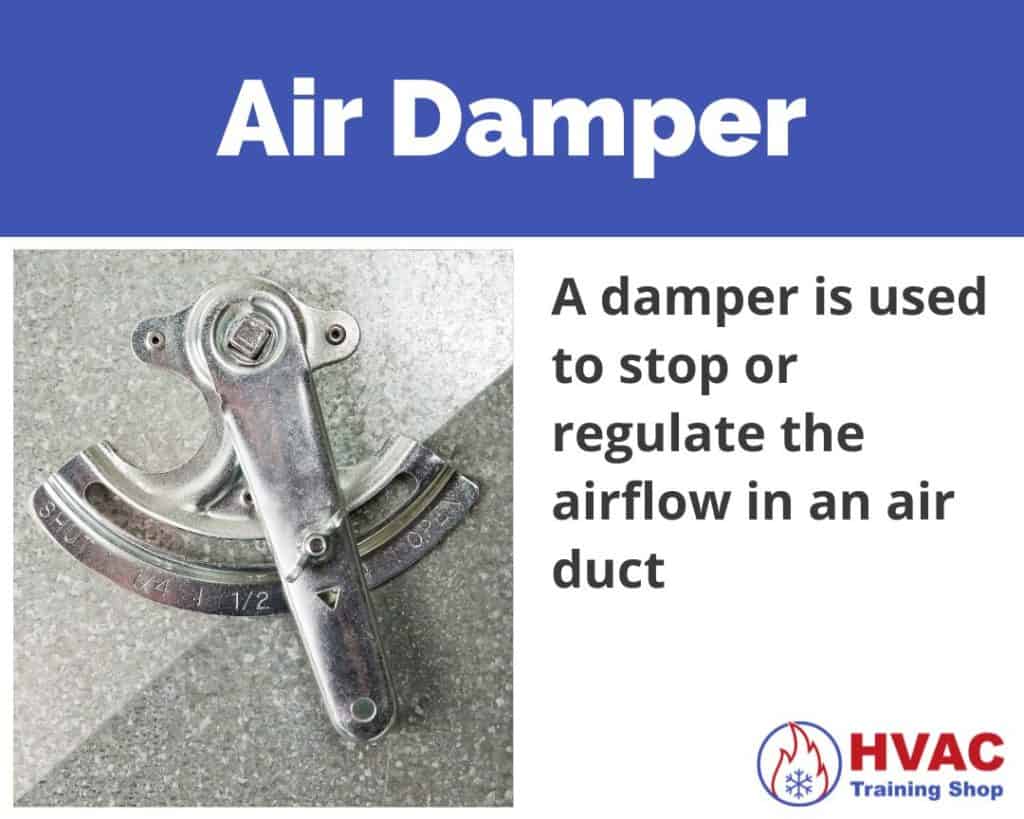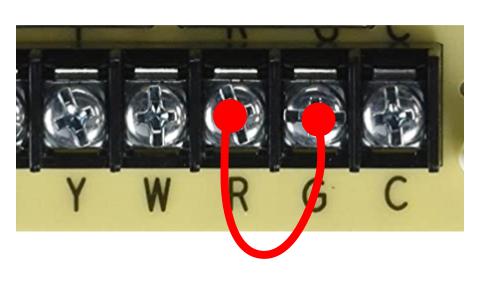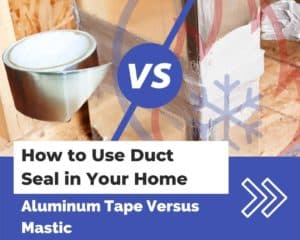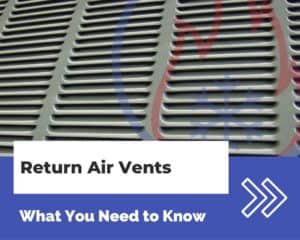Are some areas in your home warmer or cooler than others? That could be due to airflow issues.
Airflow issues can arise for a multitude of reasons—from blocked vents, broken ductwork, or malfunctions in your HVAC unit.
In this article, I’ll go over what you should do if you don’t have air blowing from one or more vents in your home. I’ll also discuss some fixes that you can do yourself—or if it’s time to call in a professional.
Check if your supply and return vents are blocked
The first thing to check is if your supply and return vents are free and clear from blockage.
In order to provide airflow, your vents need “room to breathe”. Check to make sure that there is AT LEAST 1 foot of clearance in front of all of your supply and return vents. This includes furniture, appliances, and curtains.
For your supply registers, you also need to check if they are open. Supply vent registers usually have a lever or a slider that’s used to direct their airflow. Their vent slats are also adjustable, so be sure that they are open to provide a clear path for airflow.
Check if the dampers are open
Your HVAC system may have dampers that control the airflow around your home. Dampers are typical in larger multi-zone systems or systems with multiple main ducts.
Dampers are used to stop or regulate the airflow in an air duct. For example, an isolation damper is used to completely shut off airflow to an area. So be sure to check if any isolation dampers are closed off if you aren’t getting airflow to an area in your home.

Another type of damper is a balancing damper. Balancing dampers are used to control the amount of airflow to or from a space.
Balancing dampers are usually set by an HVAC technician when the system is installed.
When starting up the HVAC system, the technician will measure the pressures and airflows in different areas of the home. Then they will adjust the balancing dampers so that every area gets the correct amount of airflow per design.
Balancing dampers are not meant to be adjusted. However, they can sometimes become loose and dislodged from their set position and close off. If this happens, then you will need an HVAC technician to readjust the balancing damper.
Check if your air filter is dirty
The next thing that you should check is if your air filter is dirty. A dirty, clogged air filter will impede the airflow in your home’s HVAC system.
An air filter that’s excessively clogged may even totally block airflow through your HVAC system.
If your air filter is dirty, you need to replace it with a clean, new one. As a rule of thumb, you should change your HVAC unit’s air filter every 1-2 months.
If you are using a reusable, washable air filter, be sure to clean it AT LEAST once a month.
Check if your air filter is too strong
When it comes to air filters, stronger isn’t always better.
A strong air filter with a high MERV rating will generally cause more airflow restriction than a filter with a lower MERV rating.
Stronger, more efficient air filters will absolutely capture more particles. But for most homes, they are unnecessary.
In fact, most homes’ HVAC systems aren’t designed to run with the pressure drop from a high-efficiency filter.
I recommend using an air filter with a MERV rating of 5 to 8. If you go any higher, you’ll likely cause airflow restrictions that can have long-lasting effects on the performance and maintenance of your HVAC system.
For more information about air filter MERV ratings, check out my article below:
Check your thermostat for errors
The next thing that you should do when there is no air blowing from the vents in your home is to check your thermostat. The thermostat controls the HVAC system in your home—so if the thermostat isn’t turned on, then you won’t have any airflow.
Your thermostat will indicate the status of your HVAC system, and if it is on or off. Go ahead and switch your thermostat to “fan-only” mode and see if that improves airflow.
If you want to bypass the thermostat and turn the blower on manually, jump the R and G terminals on the control board as shown below:

By jumping the R and G terminals together on your control board, you are bypassing the thermostat. If your blower starts when jumping the R and G terminals but not when turning on the thermostat, then there is an issue with the thermostat.
If your thermostat is working fine, then move on to the next step.
Check your control board for errors
Your HVAC unit’s control board is the central computer that controls your heating or cooling system. If the control board detects an error in the system, then it will communicate that error to you using an LED with an error code.
Most control boards have a small diagnostic light that flashes in a certain pattern depending on the error.
For example, 3 flashes could mean that your furnace’s inducer pressure switch is not triggering—causing a shutdown of the entire system.
Some newer control boards have a small alphanumeric LED display that shows an actual error code, so you can read the code directly.
In either case, you’ll need to find out what the error code means by looking it up in your unit’s manual. Depending on the diagnosis, you may be able to correct the issue yourself. If the issue is too complex, you’ll need to call in an HVAC professional.
For more information about troubleshooting control boards, see my article below:
If your control board is operating normally, then move on to the next step.
Check if your air handler’s blower is running
The air handler’s blower is the component in the HVAC system that generates airflow.
Simply put: if the blower isn’t running, then there won’t be any airflow to/from the vents in your home.
After you’ve confirmed that your thermostat and control board are operating, check if your blower is running.
The blower is found behind the access panel to the air handling unit. It’s usually in the same compartment that the control board is in.
If you think that your blower motor is bad, you’ll need to troubleshoot it.
For more information about troubleshooting a blower, check out my article below:
Check if your ductwork has leaks, kinks, or implosion
Another thing to check is if your ductwork has leaks in it. Any kind of leak—even a small one—will affect the airflow in your home.
In the worst cases, a large hole, busted seam, or disconnected piece of ductwork will severely impact the airflow in your home’s HVAC system.
In most homes, the ductwork will run through the attic or basement to the air handler.
It’s different in every home, so you’ll need to figure out where your ductwork is and check for leaks. It’s usually best to start checking for leaks right at your air handler since that’s where they’re most likely to occur.
If you find a leaky duct in your home, check out my article below for instructions on how to seal it:
Check if flex duct has kinks or damage
Flex duct is normally used for the final connection from the main duct to the air vent. It’s used because it’s flexible, easy to install, and insulated. However, flex ducts can be easily kinked or damaged, causing an impediment to airflow.
Check all your flex ducts for kinks, damage, or leaks.
Kinks can arise in flex ducts that are not properly supported. Most ductwork installations use straps to support flex ducts. If you find an unsupported flex duct, a quick DIY solution is to use zip ties to secure it to a nearby truss.
Insulated flex duct can also implode upon itself—when the insulation collapses and clogs the interior of the duct. This is tough to find from the outside—you’ll need to remove it from the main duct and visually inspect it from the inside. If the insulation has collapsed, then you’ll need to replace the flex duct.
Ductwork imploding
If your return vents are blocked, then your ductwork runs the risk of imploding. Ductwork implodes when there is excessive negative pressure inside the ductwork.
Where does the excess negative pressure come from?
If all your return vents are blocked and the blower is running, the blower has nowhere to suck in air from—this causes the ductwork to crumple upon itself. It’s like sucking in all of the air from a paper bag.
If your ductwork has imploded, then it cannot be repaired—it needs to be replaced.
Check if your drain pan is full
A full drain pan—while seemingly innocuous—will cause your entire HVAC system to shut down.
Why does a full drain pan shut down your HVAC unit?
A full drain pan shuts down your HVAC unit because an overflow of water has the potential to cause large amounts of water damage to your home.
If your drain pan is full, the first thing you need to check is its drain line. A clogged drain line will cause your HVAC unit to fill up with water, so it’s important to keep it clean.
For more information about clogged AC or furnace condensate drains, check out my articles below:
Check if your AC cooling coil is clogged
If your AC’s cooling coil gets clogged, then it will impede the airflow in your HVAC system.
So why does an AC cooling coil get clogged in the first place?
The only way that I’ve ever seen an AC coil get clogged in an air handler is if the unit runs without an air filter. When the unit runs without an air filter, an excessive amount of dust will build up on the coil.
Normally, a few specs of dust here and there is no problem for the cooling coil, since the condensation on the coil will rinse it off.
However, an air handler running without an air filter will have large clumps of dust build-up on the unit’s internal components. Eventually, these clumps of dust will dislodge from the internal components and get stuck in the cooling coil.
If your AC’s cooling coil is clogged, then it needs to be cleaned out.
Most cooling coils are inaccessible behind a plenum without any access panels. You’ll need to get an HVAC professional to clean your coil out. They will need to remove the sheet metal, clean the coil, and then re-fabricate the sheet metal to cover the coil.
If the coil is extremely dirty, then the HVAC professional will need to remove the coil, clean it, and then reinstall it.



Ok, me my breaker skips after about 5 minutes, does that say something to anyone?
Hi Philip,
It’s tough to tell from your description – a tripping breaker could be due to a multitude of things. My guess is that your HVAC unit is pulling more amperage than it should – somewhere close to the breaker’s rating, but not enough to trip it instantly. Check out my article here regarding tripping circuit breakers.
I own a restaurant. All the vents blow cool air but 3. 3 of the vents out of 4 are blowing light air, and one is blowing strong. Doesn’t make sense, we opened all the dampers too
Hi James,
The dampers are there to balance the airflow out of the vents. You should call a contractor that does air balancing to measure the airflow out of the vents and adjust the dampers to get the proper airflow from the vents.
Hope this helps
-Trey
My HVAC starts fine, but stops blowing air from any vent after a few minutes. This happens to both AC and Heat. I opened the unit and watched the blower. It starts strong, but after a few minutes it slows down to a stop.
If I shut the unit down and restart, the same thing happens. Any ideas?